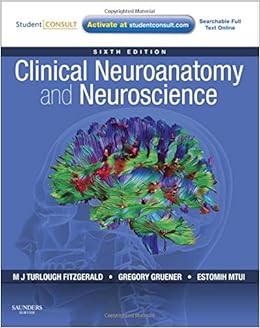Apparaten in deze klasse zijn daarom alleen geschikt in een droge schone ruimte zoals een. Elektrisch schema huisinstallatie symbolen elektriciteit. Bij een defect zouden metalen delen onder kunnen komen te staan.
This compact reference makes the case for a middle ground between clinical. 978-3-319-17058-9; Digitally watermarked, DRM-free; Included format: PDF,. Basic Clinical Neuroscience 3rd Edition PDF - PDF Medical Books Clinically oriented and student-friendly, Basic Clinical Neuroscience provides Neuroscience Reading Online Books Online Brain Training Free Training Neurology Science Books Textbook Biology.
Gratis di microsoft excel 2010 full version software with crack. In this article, we present recent neuroimaging studies performed to identify the neural network involved in handwriting. These studies, carried out in adults and in children, suggest that the mastery of handwriting is based on the involvement of a network of brain structures whose involvement and inter-connection are specific to writing alphabet characters. This network is built upon the joint learning of writing and reading and depends on the level of expertise of the writer. In addition, a part of this graphomotor network is also brought into play during the identification letters during visual reading.
These skills are also the basis for the development of more complex language activities involving orthographic knowledge and composition of texts. The studies presented cover two perspectives: that of neuroscience and that of cognitive psychology, as both are necessary to understand a complex process of writing and both depend on natural interactions and the influence of educational exposure. 8 The left panel represents a lateral view of the left hemisphere (LH), the middle panel a top view of the brain, and the right panel a right view of the right hemisphere (RH).

Writing to dictation has been contrasted to a situation where the participants were holding the pen on the writing surface without moving. Writing engages a large number of sensory and motor cortical regions, because the dictated stimulus has to be processed by auditory regions and converted into gestures while the visual feedback is processed online by the occipital regions. One can notice the strongly left-lateralized activations, related to the control of the right hand by left hemispheric sensorimotor regions. The 4 brain nodes which activation is consistent among brain imaging studies of handwriting are circled in blue. (1- dorsal premotor cortex, 2- ventral premotor cortex 3- superior parietal cortex, 4- fusiform gyrus). Modified from Longcamp et al.

The cerebellum, which is the hind brain, another important center for writing, is not shown in this representation. 9 In fact, the writing network evident in many neuroimaging studies of adults also seem to play a pivotal role in children’s writing. In an fMRI study involving children between 5 th and 6 th grade, Richards et al.
(2011) compared the brain activation resulting from the writing of an unfamiliar letter shape (round shape right above top of an horizontal line), that is a pseudoletter, to a highly practiced letter of comparable shape in ball and stick manuscript format (round shape with vertical line on right). Good writers were more efficient in writing highly practiced letters than poor writers.
Interestingly, the premotor and parietal cortices, the cerebellum and the fusiform gyrus were engaged more strongly when the children were writing a new letter (pseudoletter), as if their activation needs to be higher when the memory of the shape is not stable yet in memory. However, this was true only in the case of good writers, because the activation in of those regions did not differ between newly taught and highly practiced letters in poor writers.
Another important, and related, result was that efficiency in writing was linked to the involvement of a more restricted and focused brain network. Good writers engaged fewer neural regions to write a newly taught letter than did the poor writers. The component strokes in the novel configuration of the pseudoletter are highly practiced but not in the taught configuration; so the efficiency of production must be related to the overall context or configuration in which those motor strokes are produced. Conversely, poor writers overactivated the visual system, and extra parietal and cerebellar regions.
Finally, good and poor writers differed significantly in activation in left fusiform cortex when writing highly practiced letters. This individual fusiform activation correlated significantly with behavioral measures of automatic letter writing and expressive orthographic coding.
Multiple regression in which both individual fusiform activation and individual orthographic coding were entered explained significant variance in written composition. Thus, contrary to a popular belief handwriting is not just a motor or movement skill—it also involves written language at the letter form level. 10 In sum, the development of a more focused activation of the premotor, parietal and cerebellar regions while learning new letter shapes is associated with good writing skills whereas more widespread activation is associated with poor writing skills. As pointed out by this study, there is also a critical involvement of and interactions between the visual and motor systems in the development of the writing skill, since the efficiency depends both on the focalization of the activation on motor-related brain regions when practicing new shapes and on the fusiform gyrus when writing highly practiced shapes. In addition, this pattern of brain activity significantly predicts other language skills. We will discuss those two statements in turn in the following sections.
Archive
- Mayday Conflict Earth Game Free
- Descargar Bluestacks Para Pc De Bajos Recursos Ciudadania
- Buku Pengantar Teknik Industri Pdf Compressor
- Script Iklan Baris Cms Gratis
- Teechart Pro Vcl A
- Skill Wheel Heroes 5
- Serial Communication With Labview Tutorial Dll Injector
- How To Burn Xbox Games Isos
- Download 115 In 1 Game Nintendo Gratis Untuk Pc Games
- Visual Basic Code Maze Game
- Mad Catz Software Rat 7 Software
- Foobar2000 No Asio Drivers Found
- Compaq Presario C735em Drivers Windows 10
- How To Install Marker Bindings On K2 Skis On Sale
- Contoh Rpp Pai Sd Kurikulum 2013 Paud Jateng